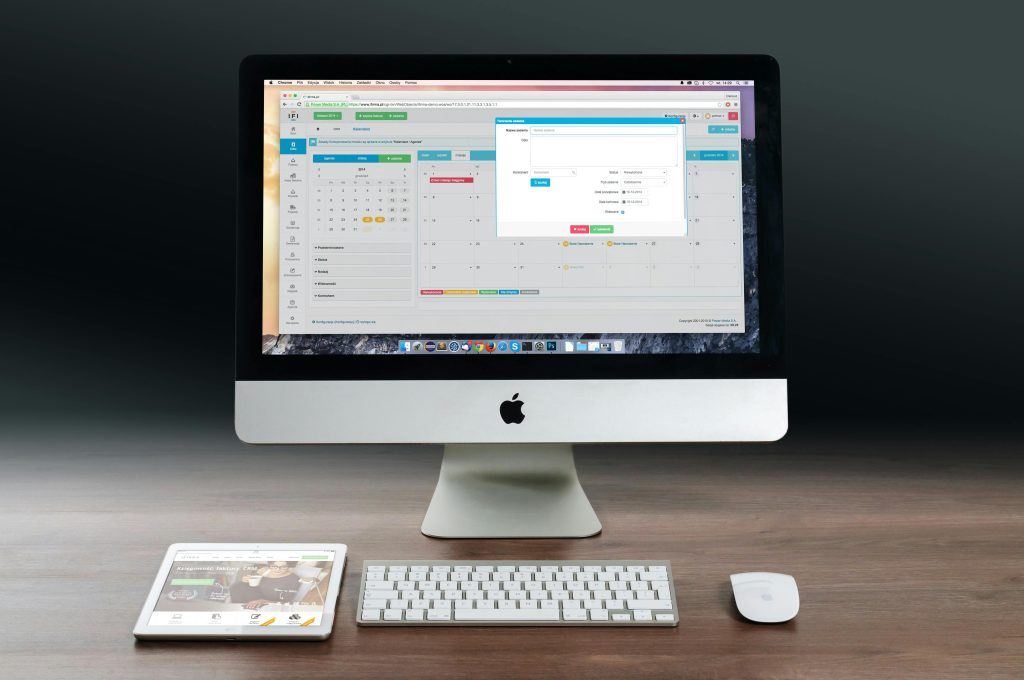Introduction
Imagine running a restaurant without knowing how many diners will show up, only to find yourself overstocked on perishables or scrambling for supplies at the last minute. In the supply chain world, demand forecasting plays the same role: it predicts future customer needs, enabling you to stock the right products at the right time. When tightly integrated with your inventory management processes, effective demand forecasting minimizes stockouts, slashes carrying costs, and keeps operations humming smoothly.
In this comprehensive guide, we’ll explore what demand forecasting is, dive into popular forecasting methods, outline the step-by-step process, and demonstrate exactly how forecasts feed into inventory systems. Along the way, you’ll discover best practices, real-life examples, and expert insights to transform your raw data into strategic advantages. Whether you’re a retailer, manufacturer, or wholesaler, this article equips you with the knowledge and tools to elevate your inventory game through smarter forecasting.
What Is Demand Forecasting?
Demand forecasting is the systematic practice of estimating future customer demand for products or services over a specified period. It answers critical questions such as:

- Volume Predictions: How many units of Product X will sell next month?
- Trend Analysis: Will demand for winter jackets spike in November?
- Promotional Impact: How will a 20% off sale influence weekly sales volumes?
Accurate forecasts empower businesses to plan procurement, staffing, production, and distribution proactively—rather than reacting to shortages and overstocks.
Quantitative vs. Qualitative Forecasting
- Quantitative Methods
- Time-Series Analysis: Uses historical sales data to extrapolate future demand via statistical models.
- Causal Models: Links demand to external factors (e.g., price, marketing spend) through regression.
- Machine Learning: Leverages algorithms—random forests, neural networks—to detect complex, non-linear patterns in large datasets.
- Qualitative Methods
- Delphi Method: Experts provide anonymous estimates; iterated rounds converge on consensus.
- Market Research & Surveys: Collect insights on consumer intentions and competitor strategies.
- Sales Team Feedback: Leverages field knowledge on emerging opportunities or risks.
Example: A new smartphone launch lacks historical data, so the marketing team may survey early adopters (qualitative) while blending limited pre-order figures into a simple time-series (quantitative).
Common Forecasting Methods
Choosing the right forecasting technique depends on your data quality, SKU complexity, and business cycle. Here are some of the most widely used methods:
1. Moving Average
- How It Works: Averages demand over a fixed window (e.g., last 3 months).
- When to Use: Stable demand with minimal trend or seasonality.
- Formula (3-Month Moving Average): textCopyEdit
Forecast_Month4 = (Demand_M1 + Demand_M2 + Demand_M3) / 3
2. Exponential Smoothing
- How It Works: Weights recent observations more heavily to adapt to trends.
- Variants:
- Simple Exponential Smoothing (no trend/seasonality)
- Holt’s Method (trend)
- Holt-Winters (trend + seasonality)
- Use Case: Moderate trending or seasonal products like apparel.
3. ARIMA (AutoRegressive Integrated Moving Average)
- How It Works: Combines autoregression (past values), differencing (to remove trends), and moving average of errors.
- Strengths: Captures complex patterns and seasonality.
- Considerations: Requires statistical expertise and enough data points (typically ≥ 50).
4. Regression Analysis
- How It Works: Models demand as a function of independent variables (e.g., price, ad spend).
- Example Equation: textCopyEdit
Demand = β0 + β1*(Price) + β2*(Advertising Budget) + ε - When to Use: When you have reliable data on causal drivers.
5. Machine Learning Approaches
- Algorithms: Random forests, gradient boosting, neural networks.
- Benefits: Handles large, multivariate datasets; captures non-linear interactions.
- Challenges: Requires clean, robust data and careful tuning to avoid overfitting.
6. Judgmental Methods
- When to Use: New product launches, very short-term forecasts, or rapidly changing markets.
- Process: Expert panels adjust statistical forecasts based on market intelligence.
The Demand Forecasting Process
A robust forecasting framework involves these five phases:
1. Data Collection and Preparation
- Gather Historical Data: At least 12–24 months of sales by SKU, channel, region.
- Include External Factors: Promotions, price changes, economic indicators, weather events.
- Cleanse & Validate: Remove outliers (e.g., one-off bulk orders), correct errors, and fill missing values.

Pro Tip: Use demand data at the most granular level you can support (e.g., SKU × location × channel) to capture localized trends.
2. Model Selection
- Segment Your SKUs:
- Fast-moving vs. slow-moving
- Seasonal vs. non-seasonal
- High-margin vs. low-margin
- Assign Methods per Segment:
- Seasonal items → Holt-Winters
- Stable items → Moving average or simple exponential smoothing
- Complex patterns → ARIMA or machine learning
3. Model Training and Validation
- Train on Historical Data: Fit the chosen models to past sales.
- Validate Accuracy:
- Mean Absolute Percentage Error (MAPE): textCopyEdit
MAPE = (1/n) * Σ |(Actual - Forecast) / Actual| × 100% - Mean Absolute Deviation (MAD) and Root Mean Squared Error (RMSE)
- Mean Absolute Percentage Error (MAPE): textCopyEdit
- Benchmark Against Baseline: Compare advanced models vs. naïve forecasts (e.g., last period’s sales).
4. Forecast Generation
- Generate Forecasts: For each SKU × time horizon (days, weeks, months).
- Aggregate & Adjust: Roll up to category, channel, and total to spot inconsistencies.
- Incorporate Judgment: Overlay qualitative insights for events like promotions or supply disruptions.
5. Continuous Monitoring and Reforecasting
- Track Forecast Error: Maintain dashboards showing accuracy metrics by SKU segment.
- Reforecast Frequency:
- Short-term (daily/weekly) for fast-movers.
- Monthly/quarterly for slow-moving or long-lead items.
- Automate Retraining: Schedule regular model retraining to adapt to changing patterns.
How Demand Forecasting Feeds Inventory Management
Integrating demand forecasts into inventory processes ensures you hold the right stock at the right time. Here’s how forecasts directly influence inventory decisions:

1. Reorder Point (ROP) Calculation
Determining when to trigger a replenishment order:
textCopyEditReorder Point = (Average Daily Demand × Lead Time Days) + Safety Stock
- Average Daily Demand: From your forecast for the lead time period.
- Lead Time Days: Supplier or production lead time.
- Safety Stock: Buffer based on forecast error and desired service level.
Example:
- Forecasted daily demand for Widget A = 50 units.
- Lead time = 10 days.
- Safety stock (2 weeks of demand × 20% forecast error) = (50 × 14) × 0.20 = 140 units.
- ROP = (50 × 10) + 140 = 640 units.
2. Safety Stock Determination
Buffer against variability in demand or supply:
- Standard Deviation of Demand (σd): Compute from forecast residuals.
- Service Level Factor (Z): Z-score corresponding to your target fill rate (e.g., 1.65 for 95%).
- Safety Stock Formula: textCopyEdit
Safety Stock = Z × σd × √Lead Time
3. Order Quantity Planning
Choosing the right lot sizes:
- Economic Order Quantity (EOQ): Balances ordering and holding costs: textCopyEdit
EOQ = √((2 × Demand × Order Cost) / Holding Cost per Unit) - Forecast-Driven EOQ: Plug in forecasted annual demand to compute EOQ per SKU.
4. Procurement Scheduling
- Rolling Purchase Plans: Align POs with forecast windows (e.g., next 3 months).
- Vendor Collaboration: Share forecasts with suppliers for vendor-managed inventory (VMI) on slow-moving items.
5. Production and Capacity Planning
Manufacturers use forecasts to:
- Level Load Production: Smooth production schedules, minimize changeovers.
- Plan Workforce: Schedule labor based on predicted output.
- Secure Raw Materials: Purchase inputs just-in-time to match production runs.
6. Warehouse Slotting and Space Allocation
- Dynamic Slotting: Place high-velocity items in fast-pick zones—determined by forecasted turnover rates.
- Space Reservation: Allocate space for promotional or seasonal surges (e.g., allocating extra freezer capacity ahead of summer ice cream demand).
7. Distribution and Logistics
- Network Optimization: Forecasted demand by region drives distribution center replenishment and cross-dock schedules.
- Transportation Planning: Reserve freight capacity early for peak seasons to avoid spot-market premiums.
Integrating Forecasts with Inventory Systems
To fully leverage forecasting, integrate outputs directly into your inventory management ecosystem:

ERP/WMS Integration
- Automated Data Flows:
- Push forecasted demand into ERP as planned orders.
- Update WMS reorder points and safety stocks via APIs or batch imports.
- Real-Time Adjustments: Modern platforms allow forecast adjustments to cascade instantly, triggering purchase requisitions or alerts.
Dashboarding and Alerts
- Interactive Dashboards: Display forecast vs. actual, inventory levels, and KPI trends in tools like Power BI or Tableau.
- Automated Alerts: Notify planners when forecast accuracy dips below thresholds or inventory falls outside target bands.
AI-Enabled Assistants
- Chatbots for Planners: Query “What’s the forecast for SKU123 next week?” and receive instant data.
- Anomaly Detection: ML models flag outliers in demand or inventory that warrant human review.
Best Practices for Demand‐to‐Inventory Alignment
- Cross‐Functional Collaboration: Harmonize sales, marketing, operations, and finance around a single consensus forecast.
- Segmentation by Lifecycle Stage: Use different models for new, growth, mature, and declining products.
- Scenario Planning: Maintain baseline, upside, and downside forecasts for risk mitigation.
- Regular Calibration: Revisit model parameters semi‐annually or after major business changes (e.g., entering new markets).
- Continuous Data Quality Improvement: Invest in tools and processes that ensure data cleanliness and integrity.

Challenges and How to Overcome Them
| Challenge | Solution |
|---|---|
| Data Silos | Establish centralized data warehouse or data lake. |
| Seasonal Spikes | Use seasonal decomposition models (e.g., SARIMA, Holt-Winters). |
| New Product Uncertainty | Blend analog forecasting (comparable SKUs) with qualitative insights. |
| Market Disruptions | Incorporate external indicators (e.g., commodity prices, macroeconomic indices). |
| Skill Gaps | Train planners on statistical methods or leverage cloud-based forecasting platforms. |
Future Trends in Demand Forecasting
- Advanced AI/Deep Learning: Neural networks that capture intricate patterns across thousands of SKUs.
- Internet of Things (IoT) Data: Real‐time telemetry from smart shelves and connected devices enriches short‐term forecasts.
- Blockchain for Collaboration: Secure, shared demand data across supply chain partners improves visibility and trust.
- Prescriptive Analytics: Beyond predicting demand, systems recommend optimal ordering, pricing, and promotion strategies.
Conclusion
Demand forecasting is the lifeblood of modern inventory management. When executed correctly, it converts historical sales data and market insights into precise, actionable predictions—driving reorder points, safety stocks, procurement schedules, and warehouse operations. By following a structured forecasting process, selecting appropriate models, and integrating forecasts into your ERP/WMS, you’ll achieve higher service levels, leaner inventories, and improved profitability.
Invest in continuous monitoring, cross-functional alignment, and emerging technologies like AI and IoT to stay ahead of demand shifts. With best practices and expert strategies in hand, you’re ready to transform forecast data into a competitive edge—ensuring your products are always where customers need them, exactly when they need them.

